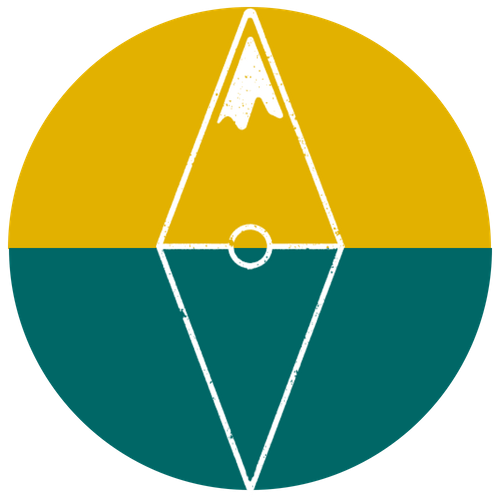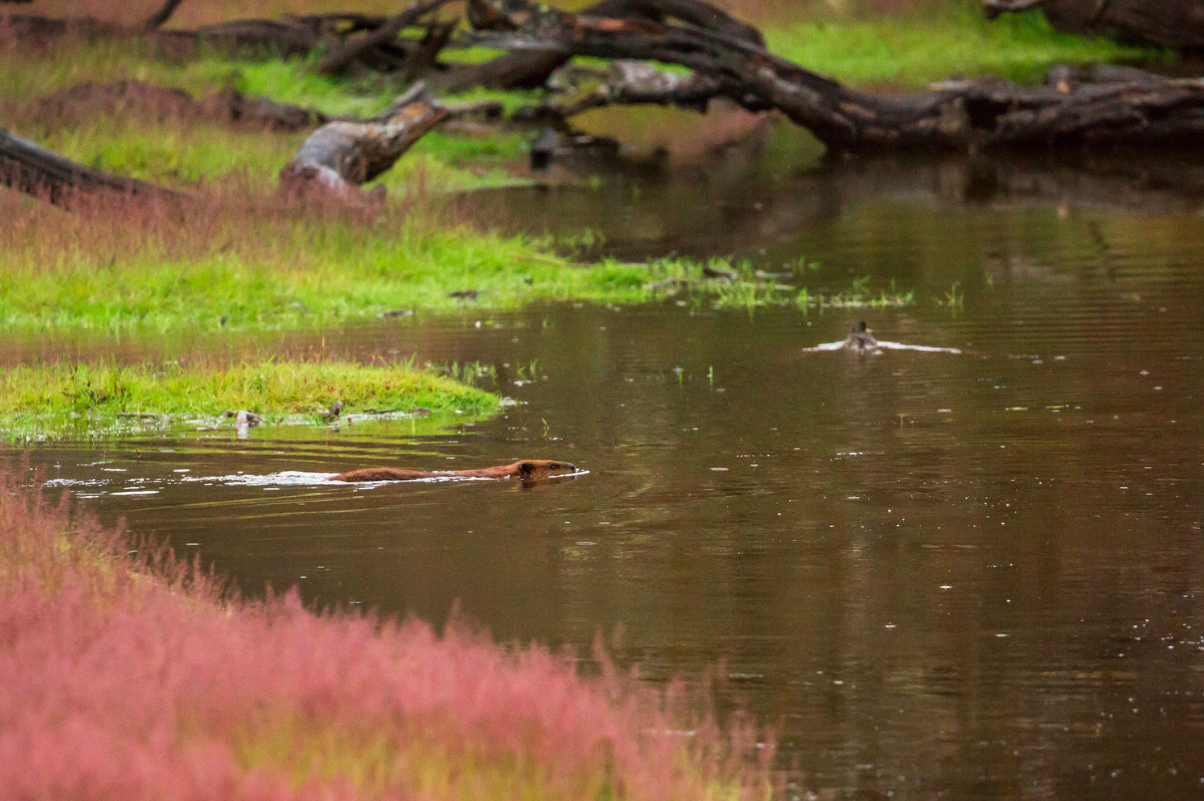PATAGONIA'S BIODIVERSITY: Photographs of Southern Chile's Wild Fauna
Text & Photos: Justin Lotak · 5 min read
Sea lion colony in the Valdivian Coastal Reserve, Chile
It is often the jaw-dropping mountains, untouched fiords, hanging glaciers, and pristine forests that bring us to the remote land of Chilean Patagonia, far from most of the world's populated places; but the wildlife that lives here can be as impressive and new to observers as many of the surrounding landscapes.
For the last five months we've been hiking and camping in some of this region's wildest places, from the temperate Valdivian rainforests of northern Patagonia, to the windy and wild south of the province of Magallanes. And in many of the places we visited, our only companions were the animals that call these places home.
Below is a selection of some of our favorite shots of Chilean Patagonia's wildlife. These photos were taken in the following locations, from south to north: Yendegaia National Park, Karukinka Natural Park, Alberto de Agostini National Park, Cabo Froward, Patagonia Park, Jeinimeni National Reserve, Cerro Castillo National Reserve, Queulat National Park, Tantauco Park, and the Valdivian Coastal Reserve.
Fuegian fox (Lycalopex culpaeus lycoides)
The Fuegian fox is a subspecies of the zorro colorado, living on the island of Tierra del Fuego. It is the southernmost canid in the world and is the only known fox species witnessed to have hunted young guanacos.
austral parakeet (Enicognathus ferrugineus)
An austral parakeet at WCS's Karukinka Natural Park on Chile's side of Tierra del Fuego. This is the world's southernmost parrot, with a range from Temuco, Chile all the way down to the southern tip of the continent.
male Magellanic woodpecker (Campephilus magellanicus)
A male Magellanic woodpecker in the Jeinimeni National Reserve. They are South America's largest species of woodpecker, and range along the Andes of Chile and southern Argentina.
female Magellanic woodpecker (Campephilus magellanicus)
A female Magellanic woodpecker in WCS's Karukinka Natural Park. The female is mostly black with a small amount of red near the base of the bill, and a white patch on the wings.
fire-eyed diucon (Xolmis pyrope)
A fire-eyed diucon in Valle Chacabuco, part of the future Patagonia National Park. These small birds are found in Chile and Argentina, their red eyes always making them distinguishable.
lesser rhea (Rhea pennata)
A male lesser rhea, or Darwin's rhea, or ñandú, with his chicks at the future Patagonia National Park. Tompkins Conservation created a breeding center to restore the populations of these large flightless birds that thrive in the Patagonian steppe ecosystem.
Beaver (Castor canadensis) in karukinka park
Beavers are an introduced species on the island of Tierra del Fuego, and now ecologists are working to eradicate them. Doing exceptionally well in this cold, rainy climate, they have changed the ecosystems by building thousands of dams, and blocking streams and rivers to create ponds for protection of their lodges. Humans are ultimately responsible for this invasive species, and their violent removal should teach us about the impacts that we can have upon ecosystems, and the repercussions that follow.
European hare (Lepus europaeus)
European hare were introduced in many places in Chile as game, and now are quite common. We spotted this one at the future Patagonia National Park. These small mammals have adapted well to the local environment, and are not considered a pest in the same in which beavers are.
huemul (Hippocamelus bisulcus)
The huemul, or south Andean deer, is an extremely rare species of deer native to Chilean Patagonia and Argentina. With an estimated population of 1,500 left in the wild, the future Patagonia National Park is working to ensure their habitat remains conserved.
Southern crested caracara (Caracara plancus)
Southern crested caracara, or carancho, is the second largest species of falcon in the world, by weight of bodymass. They are mostly scavangers and opportunistic hunters.
White-throated treerunners (Pygarrhichas albogularis)
White-throated treerunners are found throughout the beech forests of Chilean Patagonia, where they run up and down the trunks of trees, feeding on small insects and invertebrates.
Thorn-tailed rayadito (Aphrastura spinicauda)
These small noisy birds are often seen in small groups in trees while on hikes. They are usually seen in flocks of 4-7 birds and feed together on insects from tree to tree.
Guanaco (Lama guanicoe)
Guanaco standing watch in the future Patagonia National Park. Guanacos are typically found in two types of groups: one male with many females and young, and all males where they spar to eventually have their own harem. This male was part of the latter.
Black land snail (Macrocyclis peruvianus)
Black land snail in Chiloe's Tantauco Park. This is Chile's largest species of land snail, and they live in the Valdivian temperate rainforests.
Limpets on a rock, along the hike to Cabo Froward
These aquatic snails come in a variety of shapes and sizes, and slowly move around on the rocks on which they attach themselves, unlike barnacles or mussels. An interesting fact: their "teeth", which they use to scrape algae off of rocks, are the strongest known biological material, with tensile strengths of up to 6.5 GPa.
Dark-bellied cinclodes (Cinclodes patagonicus)
Dark-bellied cinclodes along the coastlines of Cabo Froward. These small birds are often found near lakes, streams and coastlines from Santiago to Tierra del Fuego.
Southern lapwing (Vanellus chilensis)
Southern lapwing wading on the southern coast of the island of Chiloe, in Tantuaco Park. These mid-sized waders aggressively defend their nests against any intruders, including humans.
South American sea lions (Otaria flavescens)
South American sea lions along the fiords of Alberto de Agostini National Park, in the very south of Chile.
Patagonian crested ducks (Lophonetta specularioides specularioides)
A pair of Patagonian crested ducks in the Strait of Magellan.
South American sea lion (Otaria flavescens) at cabo froward
Male South American sea lion entering the waters of the Strait of Magellan. This guy was huge, and surprised us during our hike on the beach.
Chilean pintails (Anas georgica spinicauda)
Chilean pintails and other bird species, wading through the shallow delta waters from Yendegaia River, in Yendegaia National Park.
upland or magellan goose (Chloephaga picta)
Male upland goose eating kelp on the coast nearby Cabo Froward. This species is indigenous to the southern stretches of South America.
Small flock of upland geese.
These monogamous birds are sometimes seen in flocks that can contain thousands of individuals.
South American terns (Sterna hirundinacea)
South American terns feeding off the coast of Cabo Froward, the southernmost point of South America's mainland.
Black-necked swan (Cygnus melancoryphus)
These are the largest waterfowl native to South America, and breed mostly in Chilean Patagonia in the Austral winters, while spending summers in Paraguay and southern Brazil.
humpback whale (Megaptera novaeangliae)
A breaching humpback whale at Yendegaia National Park. Humpbacks almost went extinct in the first part of the 20th century due to excessive hunting, but then rebounded after a 1966 moratorium on whale hunting. Now they face other challenges related to seismic and sonar testing, which can cause them to go deaf and ultimately die. Yendegaia Bay is an incredibly biodiverse underwater world, located within this new Chilean National Park.
Chimango caracara (Phalcoboenus chimango)
Chimango caracara spreading its wings along the rocky coast of Cabo Froward. These intellegent, opportunistic birds of prey are seen frequently throughout Chilean Patagonia.
Land Planarian/Land flatworm (Polycladus gayi)
This species is the only one that composes the genus polycladus, endemic to the Valdivian temperate rainforests. Is is an "understudied" species, if anyone is interested. We spotted this one along the trail in the Tantauco Park.
southern Darwin's frog (Rhinoderma darwinii)
The southern Darwin's frog, a tiny resident of the temperate rainforests of Chile and Argentina. Called the "Ranita de Darwin" in Spanish. They are found on the wet ground — this one was in Tantauco Park, on the Island of Chiloé.








































On a land destined to be logged, some of the most pristine valdivian temperate forests are now protected by this Nature Conservancy reserve. With its rugged coasts, ancient trees, impressive sand dunes, and local culture, it is a beautiful place to explore. Interview with Liliana Pezoa, administrator of the reserve.